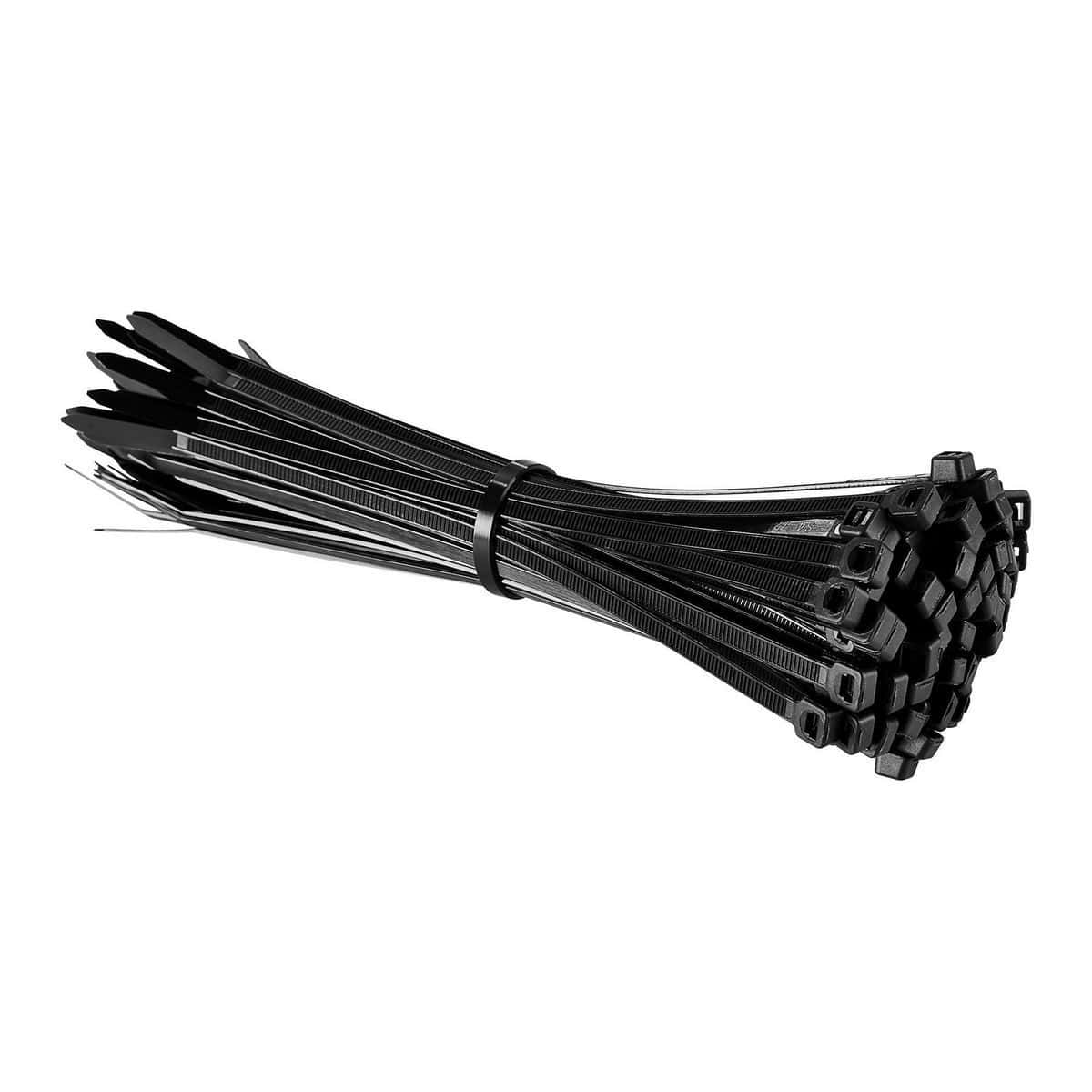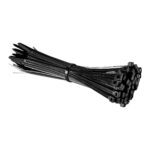Zip ties offer a quick and easy solution for cable management, but their safety and effectiveness are often debated. Many people use zip ties to bundle and secure cables in computers, home entertainment systems, and office setups. While zip ties can be safe for cable management when used correctly, they also come with potential risks and drawbacks. The biggest risk? Removing the zip tie (cutting it) opens you up to accidentally cutting a very sensitive cable in your PC.
Proper application of zip ties involves careful consideration of factors like cable type, heat exposure, and future accessibility. Releasable zip ties provide flexibility for cables that may need adjustment. However, overtightening zip ties can damage cable insulation or impede signal quality.
Alternatives like Velcro straps offer advantages for temporary setups or frequent changes. They allow easy adjustment without the risk of cutting cables. The choice between zip ties and Velcro often depends on the specific application and personal preference.
Key Takeaways
- Zip ties can be safe for cable management if applied correctly and not overtightened
- Velcro straps provide a reusable alternative for setups requiring frequent changes
- Consider cable type, heat exposure, and future access needs when choosing a cable management method
Materials and Tools for Cable Management
Effective cable management relies on selecting the right materials and tools. Various options exist, each with distinct advantages for organizing and securing cables in different environments.
Overview of Cable Ties
Cable ties are versatile fasteners used for bundling and securing cables. They come in different sizes, colors, and materials to suit various applications. Nylon is a common material for cable ties due to its durability and flexibility.
Cable ties typically feature a pawl and rack mechanism. This design allows for quick tightening and secure locking. Most cable ties are single-use, but reusable options exist.
Sizes range from a few inches to several feet long. Wider ties offer greater strength for heavier cable bundles. UV-resistant varieties are available for outdoor use.
Zip Ties Versus Velcro Straps
Zip ties and Velcro straps are popular choices for cable management. Zip ties offer a strong, permanent hold and are cost-effective. They work well for long-term installations where cables won’t need frequent access.
Velcro straps provide more flexibility. They allow for easy adjustment and reuse. This makes them ideal for situations where cables may need to be added or removed regularly.
Velcro straps are often preferred for home office setups. They reduce the risk of cable damage from over-tightening. Zip ties, however, may be better suited for industrial environments where a more secure hold is needed.
Alternative Options: Twist Ties
Twist ties offer a simple and flexible solution for cable management. They consist of a thin wire core covered with paper or plastic. This design allows for easy twisting and untwisting.
Twist ties are reusable and adjustable. They work well for temporary cable organization or lightweight applications. However, they may not provide the same level of security as zip ties or Velcro straps.
Twist ties come in various lengths and colors. Some feature a soft coating to prevent cable damage. They are particularly useful for managing small cable bundles or individual cords.
Best Practices in Cable Management
Effective cable management improves system performance, safety, and aesthetics. Proper techniques and tools ensure organized, efficient setups in various environments.
Safe Usage of Zip Ties
Zip ties offer a quick and secure method for bundling cables. When using zip ties, avoid overtightening to prevent cable damage. Leave a small gap between the tie and cables.
Choose the right size zip tie for the cable bundle. Smaller ties work for thin cables, while larger ties suit thicker bundles. Releasable zip ties allow for easier adjustments and cable replacement.
Cut excess zip tie length flush with the locking mechanism. This prevents sharp edges that could cause injury or damage nearby components.
For temporary setups or frequent changes, consider alternatives like velcro straps. These offer flexibility and reusability.
Organizing Cables in a PC
Proper cable management in a PC enhances airflow and aesthetics. Start by planning cable routes before installation. Group similar cables together and use the case’s built-in routing channels.
Use both zip ties and velcro straps for different purposes inside a PC. Zip ties work well for permanent connections, while velcro allows easier access for upgrades.
Keep cables away from fans and heat-generating components. This improves airflow and prevents thermal issues. Use modular power supplies to reduce cable clutter.
Consider custom-length cables or extensions for a cleaner look. Tuck excess cable length behind the motherboard tray when possible.
Online Resources and Community Tips
Many online communities offer valuable cable management advice. Reddit’s r/buildapc and r/CableManagement subreddits provide user-submitted tips and showcase examples.
YouTube tutorials demonstrate practical cable management techniques for various setups. These visual guides often cover specific cases or scenarios.
Professional IT forums discuss best practices for network cable management. They often cover topics like proper labeling, color-coding, and maintaining bend radius.
Manufacturer websites offer product-specific guides and tools. These resources help users maximize the potential of their hardware and accessories.







